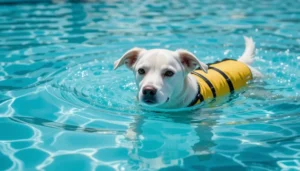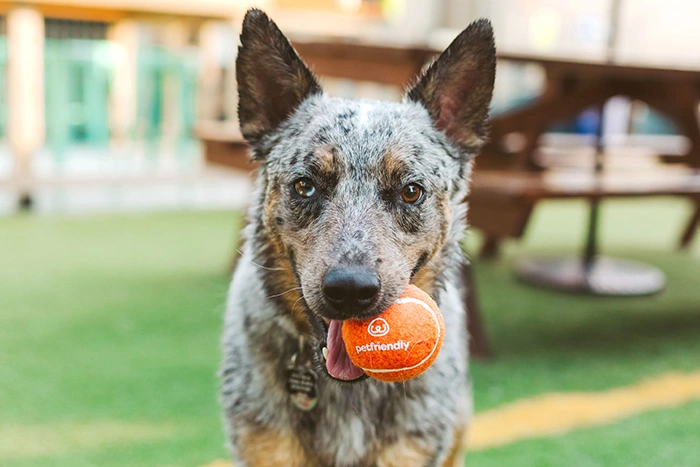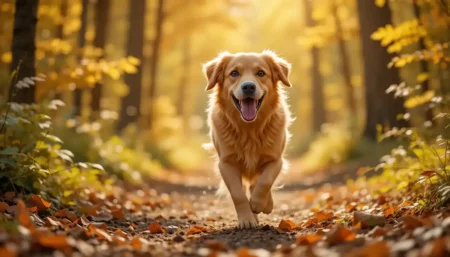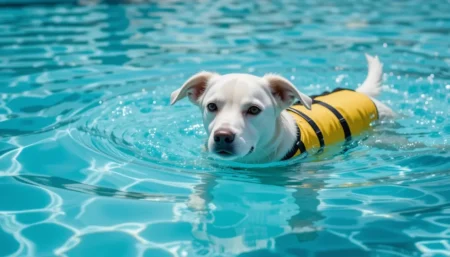The Landseer Newfoundland is a striking, black‑and‑white giant celebrated for its gentle temperament, powerful build, and deep affection for family. Originating from Canada, this breed blends strength with loyalty, making it an ideal companion for active households.
Below you’ll find a complete, easy‑to‑scan guide on everything a Landseer Newfoundland needs to thrive.
What Is a Landseer Newfoundland?
The Landseer Newfoundland is a majestic variation of the classic Newfoundland, distinguished by its striking black‑and‑white “panda” coat.
Though sometimes called the “Gentle Giant of the North,” the Landseer is fully recognized as a separate variety by many breed clubs.
- Size: One of the largest companion dogs, weighing 120‑150 lb (55‑68 kg).
- Coat: Thick, water‑resistant double coat, predominantly white with black patches.
- Temperament: Calm, patient, and devoted, especially with children.
Key Facts at a Glance
| Trait | Typical Range |
|---|---|
| Height (male) | 26‑28 in (66‑71 cm) |
| Height (female) | 24‑26 in (61‑66 cm) |
| Life expectancy | 8‑10 years |
| Recognized by | AKC (as a variety of Newfoundland) |
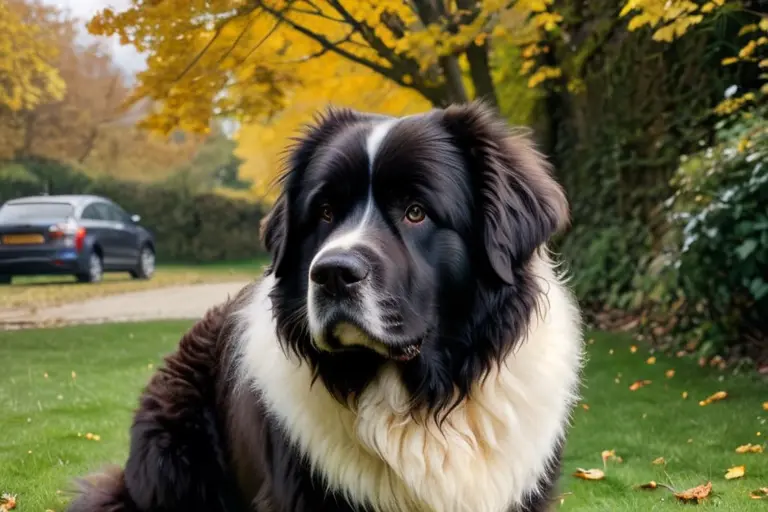
History of the Landseer Newfoundland
The Landseer’s story begins in 19th‑century England, where the breed was named after the famous painter Sir Edwin Landseer, famed for his depictions of heroic black‑and‑white dogs.
In the 1800s, British aristocrats started breeding pure‑white Newfoundlands with black Newfoundlands, producing the striking Landseer pattern.
- Early roles: Water rescue, haul‑ferrying, and herd‑guarding in Newfoundland, Canada.
- Mid‑20th century decline: WWII and changing tastes reduced numbers; many Landseers were cross‑bred with other giants.
- Modern resurgence: Dedicated clubs in the UK, Europe, and North America revived pure‑bred Landseers, emphasizing health and temperament.
Because the Landseer is essentially a color variation of the Newfoundland, many health traits overlap, but concerted breeding programs have helped preserve its unique appearance while mitigating hereditary concerns.
Physical Appearance & Breed Standards
Size and Weight
| Sex | Height at withers | Weight |
|---|---|---|
| Male | 26‑28 in (66‑71 cm) | 130‑150 lb (59‑68 kg) |
| Female | 24‑26 in (61‑66 cm) | 120‑130 lb (55‑59 kg) |
The Landseer’s robust frame includes a broad chest, strong limbs, and a slightly arched neck that supports its large head. Their paws are webbed and equipped with thick pads—an adaptation for swimming and cold terrain.
Coat and Color
- Double coat: A dense undercoat for insulation, topped by a longer outer coat that repels water.
- Pattern: Predominantly white with black markings that may appear on the face, ears, tail, and body. The markings are always clearly defined; “pie‑bald” (large bald spots) is a disqualifying fault in most clubs.
- Grooming needs: Heavy shedding twice a year (often called “coat blowing”) plus regular weekly brushing.
Distinctive Features
- Head: Broad skull, pronounced stop, and expressive dark eyes that convey intelligence.
- Tail: Thick, otter‑like, carried low when relaxed but may curve slightly during excitement.
- Feet: Large, round, with a “snowshoe” shape that provides traction on slippery surfaces.
Temperament, Personality, and Family Compatibility
Landseer Newfoundlands are renowned for their “soft‑spokenness” and calm demeanor. Their temperament makes them excellent family dogs, but understanding their social instincts helps owners nurture a well‑adjusted companion.
Social Behavior
- Gentle giant: Naturally patient and tolerant, especially with children.
- Protective: Though not aggressive, they instinctively guard their loved ones, making them reliable watchdogs.
- Playful: Enjoy water games, fetch, and gentle tug‑of‑war.
Interaction with Children
- Patient: Will often tolerate rough play without reacting.
- Supervision: Their large size necessitates teaching kids to respect boundaries—never allow a child to jump on the dog.
Interaction with Other Animals
- Dog‑friendly: Typically gets along with other dogs, especially when socialized early.
- Cats and small pets: Their “soft mouth” can be an advantage, but supervision is essential until they learn not to chase.
Quick tip: Enroll your Landseer in a puppy‑socialization class between 8‑16 weeks to cement friendly, confident behavior around other animals and strangers.
Health Considerations and Lifespan
As a large‑breed dog, the Landseer Newfoundland faces specific health challenges. Proactive care, regular veterinary exams, and a balanced lifestyle can extend their lives and improve the quality of living.
Common Health Issues
| Condition | Symptoms | Management |
|---|---|---|
| Hip Dysplasia | Limping, difficulty rising | Controlled exercise, pain meds, and surgery |
| Elbow Dysplasia | Front‑limb lameness | Controlled exercise, pain meds, surgery |
| Subvalvular Aortic Stenosis (SAS) | Exercise intolerance, fainting | Cardiac meds, regular cardiac check‑ups |
| Progressive Retinal Atrophy (PRA) | Vision loss, night blindness | Early diagnosis, supportive environment |
| Gastric Dilatation‑Volvulus (GDV) | Distended abdomen, restlessness | Emergency surgery, consider preventive gastropexy |
Preventive Care
- Annual vet visits for vaccinations, dental cleaning, and health screenings.
- Hip and elbow screenings (X‑rays) before breeding to reduce the incidence.
- Heart auscultation at least once a year to monitor for SAS.
Longevity
With attentive care, the Landseer Newfoundland typically lives 8–10 years. Their size predisposes them to a shorter lifespan compared with smaller breeds, making early detection and lifestyle management crucial.
Nutrition and Feeding Guidelines
Feeding a giant like the Landseer Newfoundland requires balancing high‑quality protein, healthy fats, and joint‑supporting nutrients. Below is a practical feeding framework.
Daily Calorie Needs
| Activity Level | Approx. kcal/day (per 100 lb) |
|---|---|
| Low (senior, couch‑potato) | 1,500‑1,800 |
| Moderate (daily walks) | 2,000‑2,400 |
| High (working, agility) | 2,500‑3,000 |
Adjust based on body condition score (BCS) – aim for a BCS of 4–5/9.
Recommended Diet Types
- High‑protein dry kibble (≥25 % protein, ≥15 % fat). Look for named meat sources (e.g., chicken, fish).
- Raw or cooked home‑cooked meals (balanced with muscle meat, organ meat, vegetables, and calcium).
- Limited‑ingredient formulas for dogs with food sensitivities.
Supplements and Treats
- Glucosamine & chondroitin for joint support (especially if the dog shows early signs of dysplasia).
- Omega‑3 fatty acids (EPA/DHA) from fish oil aid coat health and reduce inflammation.
- Treats: Use low‑calorie options; limit to <10 % of daily caloric intake.
Sample feeding schedule for a 140‑lb adult Landseer:
| Time | Meal | Approx. Amount |
|---|---|---|
| 7 am | Breakfast | 2 ½ cups dry kibble (or 1 lb raw diet) |
| 6 pm | Dinner | 2 ½ cups dry kibble (or 1 lb raw diet) |
| Throughout day | Water | Fresh, clean water always available |

Exercise, Play, and Mental Stimulation
Even a laid‑back giant needs regular activity to stay healthy and happy. A bored Landseer may develop destructive behaviors or weight gain.
Daily Exercise Requirements
- Minimum: 60 minutes of moderate activity (e.g., brisk walk, backyard play).
- Ideal: Two 30‑minute sessions plus mental enrichment.
Ideal Activities
- Water play: Swimming is a natural outlet; use a dog‑friendly pool or a safe lake.
- Fetch: Large balls or floating toys that don’t damage teeth.
- Scent games: Hide treats around the yard to engage the nose.
- Obedience drills: Short training bouts double as mental work.
Preventing Boredom
- Puzzle feeders that release kibble slowly.
- Rotate toys weekly to keep interest high.
- Interactive play with family members—Landseers thrive on companionship.
Training, Obedience, and Socialization
Training a Landseer Newfoundland is rewarding because of their eagerness to please. Consistency, patience, and positive reinforcement are key.
Basic Commands
| Command | Cue | Reward |
|---|---|---|
| Sit | “Sit” + hand raise | Treat + praise |
| Stay | “Stay” + step back | Treat after hold time |
| Come | “Come” + open arms | High‑value treat |
| Leave it | “Leave it” + object presentation | Treat after compliance |
Positive Reinforcement Techniques
- Clicker training: Pair the click with a treat to mark desired behavior.
- Variable‑ratio rewards: Gradually increase the interval between treats to build reliability.
- End on a positive note: Finish each session with a successful command and a reward.
Socialization Tips
- Early exposure: Introduce new sights, sounds, and surfaces between 8‑14 weeks.
- Controlled playdates: Start with calm, vaccinated dogs to avoid overstimulation.
- Class enrollment: Puppy‑socialization or basic obedience classes provide structured interaction.
Note: Landseers have a natural “soft mouth” but may be stubborn when not engaged. Keep training sessions brief (5‑10 minutes) and fun.
Grooming, Hygiene, and Coat Care
The Landseer Newfoundland’s luxurious coat requires consistent maintenance to stay healthy and to control shedding.
Brushing and Shedding
- Frequency: Brush 3‑4 times per week; increase to daily during shedding season.
- Tools: Slicker brush for undercoat, pin brush for topcoat, and de‑matting comb for stubborn tangles.
Bathing and Skin Health
- Bath schedule: Every 6‑8 weeks or when the dog gets especially dirty.
- Shampoo: Use a dog‑specific, gentle, moisturizing formula. Avoid human shampoos that can disturb pH balance.
Nail Trimming and Dental Care
- Nails: Trim every 3‑4 weeks; watch for the “quick” to avoid bleeding.
- Teeth: Brush teeth 2‑3 times weekly with a canine toothpaste; dental chews help reduce plaque.
Grooming checklist (weekly):
- ☐ Brush coat (3‑4×)
- ☐ Check ears for wax and debris
- ☐ Inspect paws for cuts or foreign objects
- ☐ Clean eyes with a damp cloth
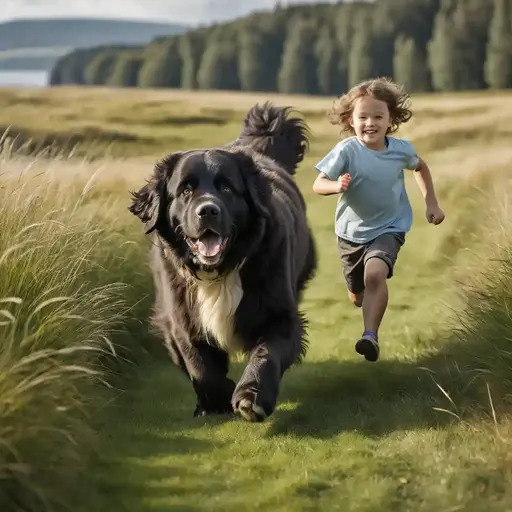
Ideal Home Environment for a Landseer Newfoundland
Finding the right living situation is essential for the well‑being of a Landseer Newfoundland. Their size and temperament shape their housing needs.
Space Requirements
- Minimum yard: 500 sq ft of secure, fenced space, preferably with a shaded area.
- Indoor room: A spacious living room or mudroom where they can rest comfortably.
Climate Considerations
- Cold climates: Their double coat handles low temperatures well; provides a dry, insulated shelter.
- Hot climates: Ensure ample shade, fresh water, and never leave them in a parked car.
Compatibility with Other Pets
- Dogs: Generally sociable, but early introductions prevent dominance issues.
- Cats: May be tolerant, but supervise initial meetings because of their size.
Home setup tip: Install a large, weather‑proof dog house with raised flooring; line the interior with a washable, insulated pad for added comfort.
Choosing a Reputable Breeder and Raising a Puppy
A responsible breeder prioritizes health, temperament, and the long‑term happiness of each Landseer Newfoundland.
What to Look for in a Breeder
- Health testing: Hip and elbow scores, cardiac evaluation (SAS), and eye exams.
- Transparent pedigree: Provide registration papers and lineage details.
- Socialization program: Puppies are exposed to basic handling, sounds, and controlled play.
- References: Positive reviews from past puppy buyers and veterinarians.
Puppy Socialization Checklist
| Milestone | Activity |
|---|---|
| 2‑4 weeks | Daily handling of ears, paws, and mouth |
| 4‑6 weeks | Introduction to different floor surfaces (tile, carpet, grass) |
| 6‑12 weeks | Gentle exposure to leashed walks, car rides, and other pets |
| 12‑16 weeks | Basic commands (sit, stay, come) with treats |
First‑Year Care
- Vaccination schedule: Core vaccines at 6, 10, 14 weeks, then boosters annually.
- Nutrition: Transition from 4‑week puppy formula to adult diet at 12‑18 months.
- Training: Consistent, positive reinforcement; enroll in a beginner obedience class by 4 months.
Quick reminder: Landseer puppies grow quickly; avoid over‑feeding to prevent early obesity, which can accelerate joint problems later.
FAQs
How much exercise does a Landseer Newfoundland need each day?
A Landseer generally requires at least 60 minutes of moderate activity—like a brisk walk or supervised play—in addition to mental enrichment. Splitting it into two short sessions helps keep the dog’s energy balanced.
Are Landseer Newfoundlands good with children?
Yes. Their gentle, patient nature makes them excellent family companions, especially with kids who treat them respectfully. Always supervise interactions due to the dog’s large size.
What are the most common health problems in Landseer Newfoundlands?
The breed is prone to hip and elbow dysplasia, subvalvular aortic stenosis (SAS), and progressive retinal atrophy (PRA). Regular veterinary check‑ups and health screening of breeding stock help reduce these risks.
How often should I groom a Landseer Newfoundland?
Brush the coat 3‑4 times per week, year‑round, increasing to daily during shedding season. Bathing every 6‑8 weeks, nail trimming every month, and regular ear checks keep the dog clean and comfortable.
Can a Landseer Newfoundland live in an apartment?
While possible, an apartment must provide ample daily exercise, a safe outdoor area for bathroom breaks, and a sturdy, insulated dog bed. Larger living spaces are preferable to accommodate their size and activity needs.
Conclusion
The Landseer Newfoundland blends striking black‑and‑white beauty with a calm, loving personality, making it a true gentle giant for families willing to meet its size and care requirements.
By understanding its history, physical standards, temperament, health risks, nutrition, exercise, training, grooming, and ideal home environment, you can give your Landseer a thriving, happy life.
Actionable tip: Before bringing a Landseer home, create a simple checklist—including space, daily exercise plan, diet schedule, and grooming routine—to ensure you’re ready for the responsibilities of this majestic breed.
A well‑prepared owner sets the foundation for a lifelong bond with a loyal, affectionate companion.


